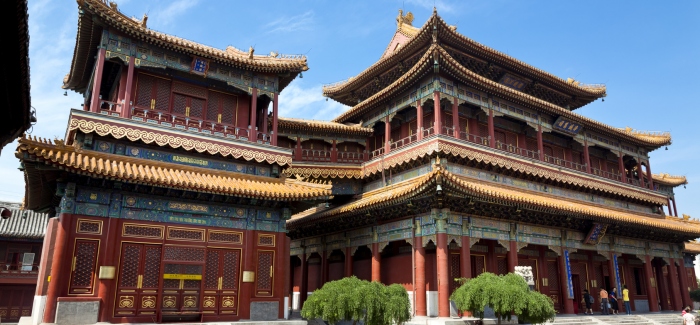The article below is based on the 2014 results. To view the latest version of this article based on the QS University Rankings: Asia 2018, click here.
The results of the 2014 QS University Rankings: Asia are out – and this year’s edition has seen some significant changes at the top. Read on to discover the 10 top universities in Asia this year, based on nine key performance indicators.
(See the ranking methodology here and last year’s top 10 here.)
National University of Singapore (NUS)
The climb of Singapore’s flagship institution from second to first place is something of a landmark moment, both for Singapore and for the region more widely. This is the first time since the QS University Rankings: Asia was launched in 2009 that the ranking has been topped by a university outside of Hong Kong. As well as climbing in the regional ranking, the National University of Singapore (NUS) has also been steadily improving its performance on the international stage; as of the 2013/14 QS World University Rankings®, it ranks within the global top 25. It’s the top-rated university in Asia according to surveyed employers, and comes second in the global survey of academics, behind the University of Tokyo.
 KAIST – Korea Advanced Institute of Science and Technology
KAIST – Korea Advanced Institute of Science and Technology
South Korea’s KAIST has made an impressive leap this year, from sixth to second place in the Asian university rankings. One of a number of relatively young universities in Asia which have rapidly established a strong global standing, this specialized public institution came third in the 2013 edition of the QS Top 50 Under 50, which highlights the world’s leading institutions established within the last half century. KAIST’s rise in the QS University Rankings: Asia is largely due to strengthened scores in the indicators assessing research production and impact, reflecting the institution’s growth into a major research center.
University of Hong Kong (HKU)
A former table-topper, the University of Hong Kong (HKU) slips one place this year to third, following a wider trend of slight loss of ground in the Asian university rankings for universities in Hong Kong. This loss can be at least partly explained by the region’s recent change from a three-year to four-year undergraduate degree system, which has led to poorer faculty: student ratios. Overall, however, universities in Hong Kong remain among the strongest in Asia across all nine assessment indicators used to compile the ranking, and particularly those focused on internationalization. Indeed, the University of Hong Kong retains the highest proportion of international students among top universities in Asia.
 Seoul National University (SNU)
Seoul National University (SNU)
The second entry from South Korea, Seoul National University (SNU) holds onto fourth position, having been overtaken by compatriot KAIST. It retains strong scores across the board, and remains South Korea’s highest rated university in the global academic survey. Both SNU and KAIST are part of a wider upwards trend in South Korean higher education, which has undergone dramatic transformation in a relatively short space of time. This year, 70% of the top 20 universities in South Korea have either improved or maintained their positions in the QS University Rankings: Asia.
 Hong Kong University of Science and Technology (HKUST)
Hong Kong University of Science and Technology (HKUST)
Having headed the ranking last year, the Hong Kong University of Science and Technology (HKUST) now finds itself in fifth place. Like other universities in Hong Kong, it suffers from a poorer faculty: student ratio this year, following the ‘double cohort’ effect resulting from the switch from three-year to four-year programs, but overall still remains one of the region’s overall top performers. Like other universities in Hong Kong, HKUST scores particularly well in the internationalization indicators; it’s beaten only by HKU for proportion of international students. Ranked 34th in the world, according to the 2013/14 QS World University Rankings, it claimed first place in the 2013 QS Top 50 Under 50.
The Chinese University of Hong Kong (CUHK)
Going against the overall trend among leading universities in Hong Kong, the Chinese University of Hong Kong (CUHK) improves its position in the Asian university rankings by one this year. Like its neighbors, CUHK enjoys especially strong scores for the international diversity of both academic staff and students. It also boasts one of the strongest international reputations among universities in Asia, joining HKU and HKUST in the top 10 universities in Asia based on QS’s global survey of academics.
 Nanyang Technological University (NTU)
Nanyang Technological University (NTU)
Proving that NUS is not the only star in the Singaporean system, Nanyang Technological University (NTU) consolidates its place among the top universities in Asia this year, climbing three places. Another fast-developer, established only in 1981, NTU came third in the last edition of the QS Top 50 Under 50, with an overall global ranking of 41st. Just outside the top 10 Asian institutions as rated by academics, it comes fifth in the region based on the international survey of employers. It also has the third strongest score for proportion of international students, just beating NUS on this measure.
 Peking University
Peking University
China’s highest entry, Peking University falls three places this year, while the next Chinese representative, Tsinghua University, remains in 14th. Overall, China remains one of the most significant players in Asian higher education, though seems to be experiencing something of a slowing in momentum in the international rankings of its leading universities. That said, more than half of China’s top 20 entries have improved their positions this year, and Chinese institutions continue to see strengthening scores for research impact – despite the significant challenge of competing with institutions that publish more research in English.
 Pohang University of Science and Technology (POSTECH)
Pohang University of Science and Technology (POSTECH)
The third South Korean university to rank among the 10 top universities in Asia, POSTECH is the country’s second major science and technology specialist – the private-sector counterpart to public institution KAIST. POSTECH improves its position by two places this year, claiming notably strong scores both for research impact and for academic staffing levels. It ranks fifth among top universities in Asia in the research citations indicator; among the overall top 10 listed here, only NUS fares better. It also has by far the best faculty: student ratio among thesetop 10 institutions, ranking fourth in Asia on this measure.
 University of Tokyo
University of Tokyo
Finally, Japan’s University of Tokyo completes the list, slipping one place this year but holding onto its top-10 spot. While many of Japan’s leading universities have seen their positions fall this year, the University of Tokyo remains the top-rated Asian institution according to surveyed academics, and second according to graduate employers (behind NUS). Its weakest scores are in the internationalization indicators, and this reflects a wider challenge for universities in Japan, which have generally not been as successful as other top universities in Asia when it comes to attracting students and academics from other countries.
Image credits: e X p o s e / Shutterstock.com (NTU); chinahbzyg / Shutterstock.com (Peking); Fran C. Muller / Shutterstock.com (Tokyo)







